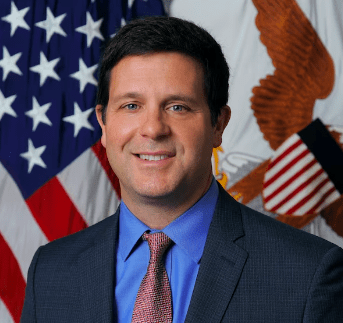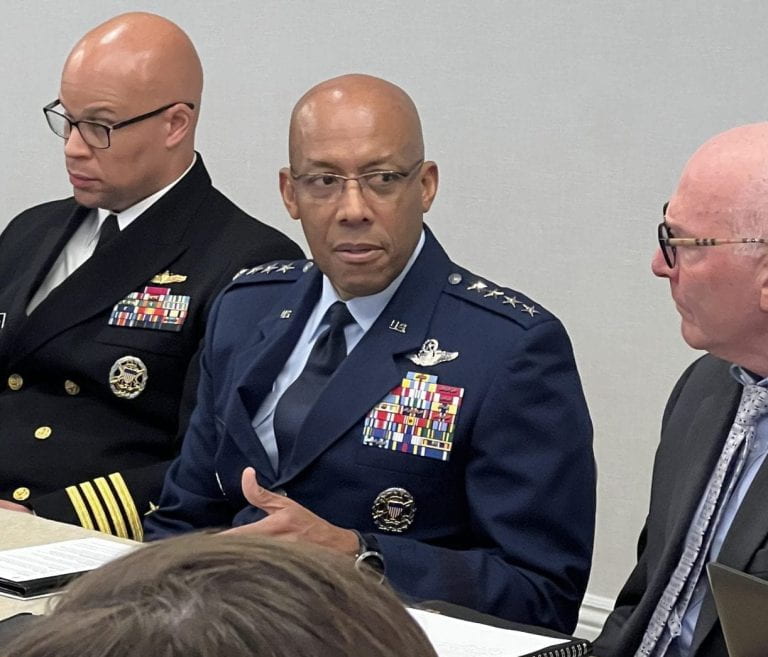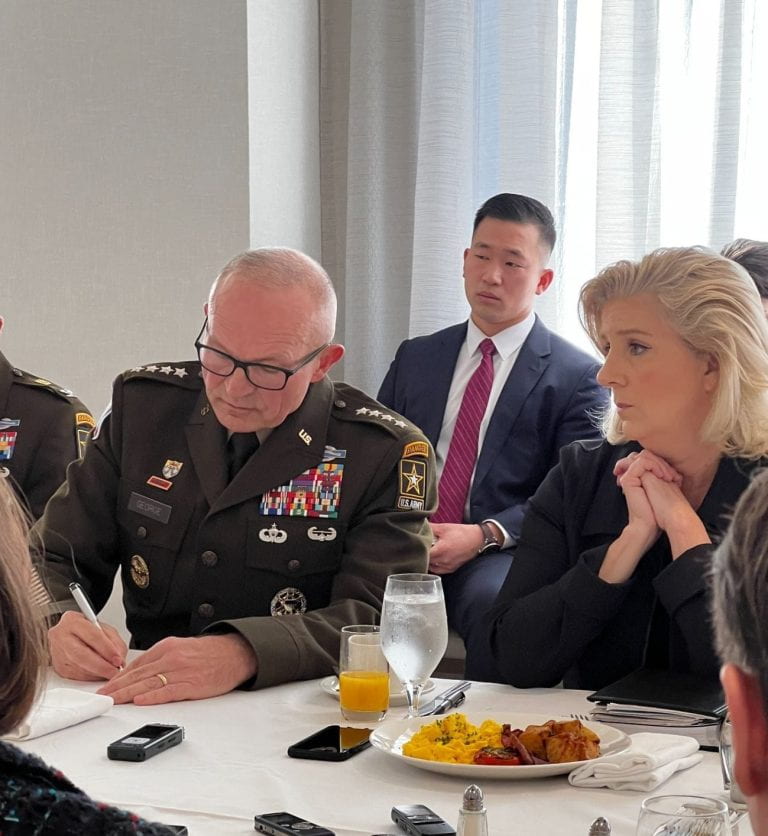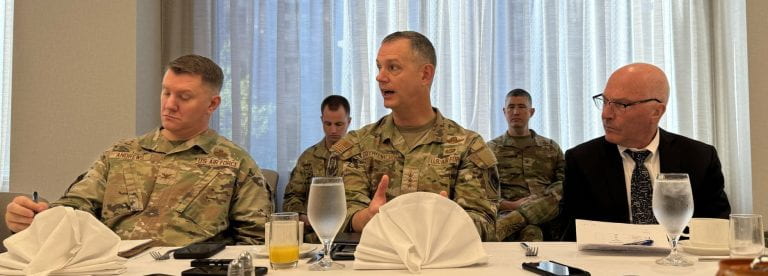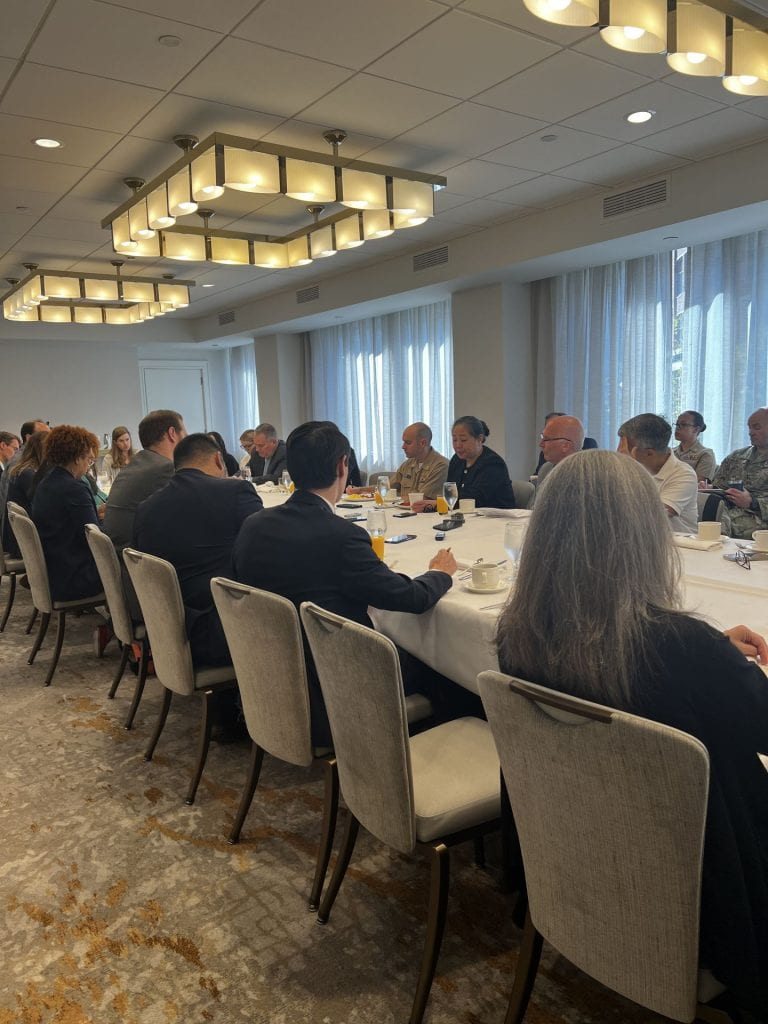BY JON HARPER
A commission on reforming planning, programming, budgeting and execution recently delivered its final report to Congress.
Trying to improve acquisition processes to help the Pentagon modernize its forces isn’t a new item on Congress’ agenda. But the chairman of the Senate Armed Services Committee told reporters that he expects lawmakers to move more aggressively to institute major reforms in the fiscal 2025 defense policy bill.
A commission on reforming defense planning, programming, budgeting and execution recently delivered its final report to Congress, a nearly 400-page document that recommends a slew of changes in these areas.
“We are thinking … very seriously about that. The PPBE panel was extremely well done, the report was excellent,” Sen. Jack Reed, D-R.I., told reporters Monday during a Defense Writers Group meeting. “Frankly, we have been trying to reform the acquisition and budget system of the Department of Defense since I got here, and we make incremental progress. But we’re recognizing now that time is really not on our side, that we have to move much more aggressively. We have to be more responsive and flexible. And so … you’ll see a much more keener interest in trying to streamline how DOD develops and acquires equipment, how they deal with these new emerging technologies, which are changing so quickly. So we’re really interested in moving forward with significant reforms.”
On Wednesday, the Senate Armed Services Committee will be holding a hearing with leaders of the PPBE commission to discuss their findings and recommendations.
“The U.S. risks losing more of its already diminishing technological edge without immediate transformational changes in resourcing, especially in the year of execution. The Commission’s recommendations include much-needed changes to the period of availability of funds, account structures, reprogramming processes, and data sharing with Congress. These reforms also leverage modern business systems and data analytics to better manage resourcing and communications,” the report stated.
“One of the most consistent concerns the Commission heard over the past two years is that the current PPBE process lacks agility, limiting the Department’s ability to respond quickly and effectively to evolving threats, unanticipated events, and emerging technological opportunities,” it noted.
The panel’s recommendations for changes to help foster innovation and adaptability include allowing new-start programs and increased program quantities in certain cases when the Pentagon is operating continuing resolutions.
“The CRs generally include a provision prohibiting new start activities, which can slow efforts to insert innovative technology in both new and current programs,” the report noted.
The commission also called for increasing the availability of operating funds and raising dollar amount thresholds for so-called below threshold reprogramming (BTR), among other recommendations.
“Ultimately the Commission proposes eliminating BTRs and allowing a small percentage of an entire appropriation to be realigned with appropriate congressional briefings and oversight,” per the report.
Reed did not identify which of the recommended reforms he wants to implement, but he said including some of them will be a top priority when his committee takes up work on drafting the fiscal 2025 National Defense Authorization Act.
The SASC wants to move forward in its quest to streamline the acquisition process and enable promising capabilities and technologies to cross the so-called “valley of death” between research and development and large-scale production, he said.
Reed noted that he’s visited Ukraine and seen how Ukrainian forces have been able to quickly adapt commercial, dual-use technologies for military purposes in their fight against Russian invaders.
“We have to have the same type of resiliency. So that’s one thing we want,” he said.
Tech from the commercial sector, such as artificial intelligence and cyber capabilities, can help fuel military modernization in areas such as robotics. However, current budgeting and execution processes don’t give the Pentagon sufficient agility in adopting them, the PPBE commission said.
Meanwhile, the department last week submitted its fiscal 2025 budget request to Congress, which lays out plans for its modernization programs.
On Monday, Reed was asked to comment on the budget submission.
“Every budget is a work in progress. And we’re going to look very carefully at what the services need. We’re particularly waiting for their unfunded priority list so we can take a look at them. And then we’re going to make judgments, some of them independent of the administration’s proposal. But generally, I believe the … proposal sent out was thoughtful. It emphasized the need for innovation and it put pressure on the Congress to retire some systems that are no longer as functional as necessary. And we have to take our [legislative] responsibility too. And so I think we’re in a good position to begin this debate and get it done — hopefully this year, not next year,” he said.
Pentagon officials suggested that the DOD trimmed some of its requests for research, development, test and evaluation efforts — such as the Rapid Defense Experimentation Reserve — due to budget caps stemming from the 2023 Fiscal Responsibility Act.
“The Fiscal Responsibility Act (FRA) caps are mandatory and, if disregarded or exceeded, would be enforced by sequestration. Understanding those fiscal constraints, the Department made responsible choices to prioritize readiness and take care of people but make targeted reductions to programs that will not deliver capability to the force until the 2030s, preserving and enhancing the Joint Force’s ability to fight and win in the near term,” a DOD spokesperson said in an email to DefenseScoop.
Reed was asked how politically feasible it would be to lift the FRA caps, which set limits for defense and non-defense discretionary spending that vary depending on whether Congress passes full-year appropriations bills or CRs.
“We’re stuck with them right now. And it was really a quid pro quo for saving the country from an economic collapse if we hadn’t increased the debt ceiling. And now, it’s somewhat ironic that many of the folks that were insisting on that are now saying that the ceiling is terrible,” Reed said.
He noted that funding for border security has been one of the major sticking points in recent budget negotiations.
However, Reed suggested that he sees a potential opportunity to reach a deal on increasing spending for the Pentagon and other agencies in the future.
“I think what could drive an increase is recognizing that our national security is not simply the DOD budget, that there are other aspects [such as] our research in the sciences, our education activity, or health care activities,” he said.
“To me, one of the recruiting problems we’ve had in the military is because some young people would like to serve, but their education is such they can’t pass this very straightforward test to get in. That’s the reflection of our education system, not the military. We have a problem with obesity in our country that reflects on our public health care system. But if we had more fit young people, we’d have more recruits. So this is all one effort,” he added. “If there is a breakthrough, I think we would have to recognize, too, both sides of the agenda — both the defense and also domestic.”
Others:
Israel Will Dispatch Team to Hear Biden Administration Worries on Rafah - The New York Times (nytimes.com)
A Better Way to Give Pay Raises to Junior Enlisted? Key Senator Says It's Under Consideration This Year. | Military.com
Sen. Jack Reed praises Chuck Schumer's harsh critique of Israel's Netanyahu - Washington Times

